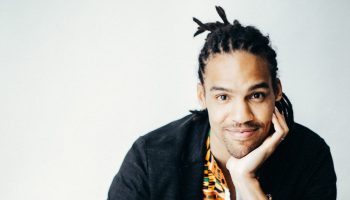
Mariia Novoselia
Staff writer
As a child, Erik Danielson used to spend his summers in the rural outdoors running around forests by Lake Ontario. Those were formative experiences, he said, and led him to becoming a stewardship coordinator for the Western New York Land Conservancy.
“At some point, trees and forests started to become more and more important in my life and it started to feel like a calling,” Danielson said. “I really feel a sense of connection to and fascination with forest communities.”
The Western New York Land Conservancy, Danielson said, is a land trust that owns conservation lands. As a stewardship coordinator, he said he inventories the properties acquired by the organization and helps manage them. Danielson will talk about his work at 12:15 p.m. today in Smith Wilkes Hall.
Titled “Trees of Chautauqua and How They Are Impacted by Climate Change,” Danielson’s talk is this season’s last Brown Bag lecture from the Bird, Tree & Garden Club, organized in partnership with the Chautauqua Climate Change Initiative.
The trees and forests of Chautauqua County have evolved because of climate change, Danielson said. Studying the ways in which they behaved in the past, he said, can help predict how they will respond to current and future changes.
The topic has not been studied a lot, which Danielson said attracted his attention.
“Living here, working here and researching (Chautauqua County’s landscapes) puts together a lot of really interesting stories that haven’t really been told,” he said.
The combination of two geographic regions – the Great Lakes Plain and the Allegheny Plateau – Danielson said, makes Chautauqua County a special location.
The county is where the Allegheny Plateau comes closest to the shore of one of the Great Lakes, he said. Proximity to Lake Erie moderates climate effects, like precipitation, on the one hand. At the same time, the region has seen a “huge outfall of snow in the winter and rain during the summer,” Danielson said.
Broad valleys that run south have deep glacial fill of a mixed sediment that creates productive aquifers. Aquifers – “huge storehouses of water,” according to the U.S. Geological Survey – are underground layers of permeable rock that can transmit groundwater. The combination of the factors, Danielson said, provides high moisture availability throughout the year.
The Seneca referred to a large section of the region as “Ga-na-da-wa-o,” he said. Accounts vary on the meaning and spelling of the name, ranging from “the land of the hemlocks” to “running through hemlocks.”
Hemlocks are evergreen trees that are most prevalent in moist and cool sites, Danielson said. Chautauqua County’s specific precipitation patterns, he said, allow them to grow along the lake plain, which is usually warm. Eastern hemlocks, as well as American beech trees, he said, are foundational forest species in Western New York. Their disappearance, he said, could completely transform local landscapes.
Hemlocks and beech trees, Danielson said, cast a deep shade and are considered “shade-tolerant” species. Losing the trees, he said, would open up large levels of forest canopy to increased levels of sunlight, drying and desiccation. What’s more, he said, all animals that depend on hemlocks and beech trees for habitat would have to search for a new place to stay and “might not be able to find it.”
“Beech is one of the primary producers of nuts that deer, bears, squirrels and other mammal wildlife feed on, so they are some of the most important trees in our forest; to suddenly lose them would dramatically change the character of our forests,” Danielson said.
Hemlocks are negatively impacted by hemlock woolly adelgid, he said. The insects are recognizable by the “white, cotton-like ‘woolly’ masses at the base of hemlock needles,” according to the New York State Department of Environmental Conservation.
Danielson said locals can help by participating in volunteer surveys of forested areas. If detected early on, he said, hemlock woolly adelgid can be treated and the spread of infestation can be slowed down.
However, there isn’t much that people can do to help American beech trees, which are predominantly affected by the beech leaf disease, Danielson said.
That disease, he said, is transmitted by a tiny worm called a nematode; stripes on beech tree leaves are the first sign of infestation. The damage caused by the nematode, Danielson said, can be severe enough to prevent the leaves from functioning.
“If the leaves can’t function, they can’t do photosynthesis and create sugars to feed the tree; then eventually, the tree is starved of nutrients,” he said. “Multiple years of the leaves being wilted and falling off due to this disease will cause the trees to die.”
Yet, while there are “a lot of concerning things about the future,” he said, there is also capacity for adaptation, which is what Danielson hopes Chautauquans take away from his lecture.
“The future, hopefully, will be not all bad,” he said.




